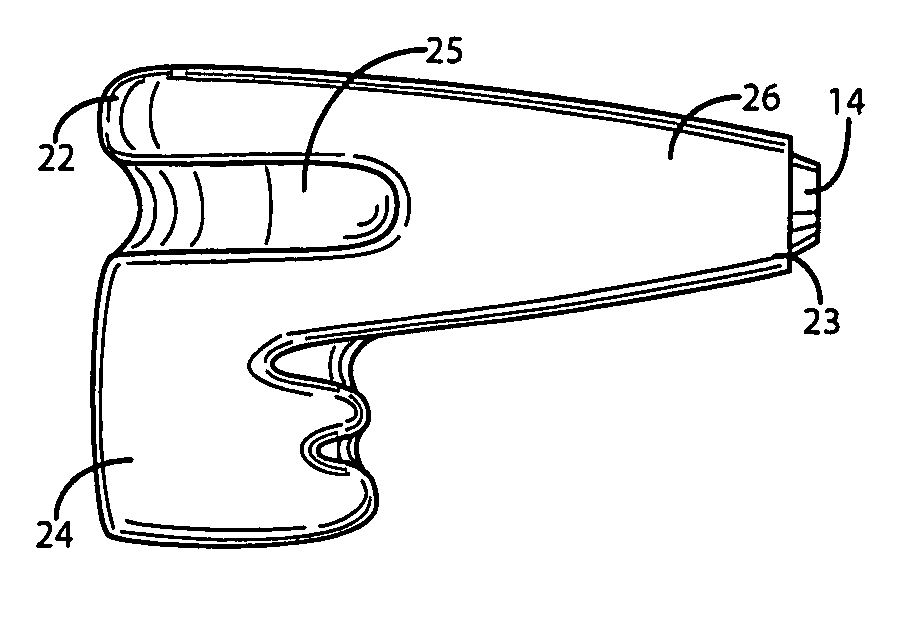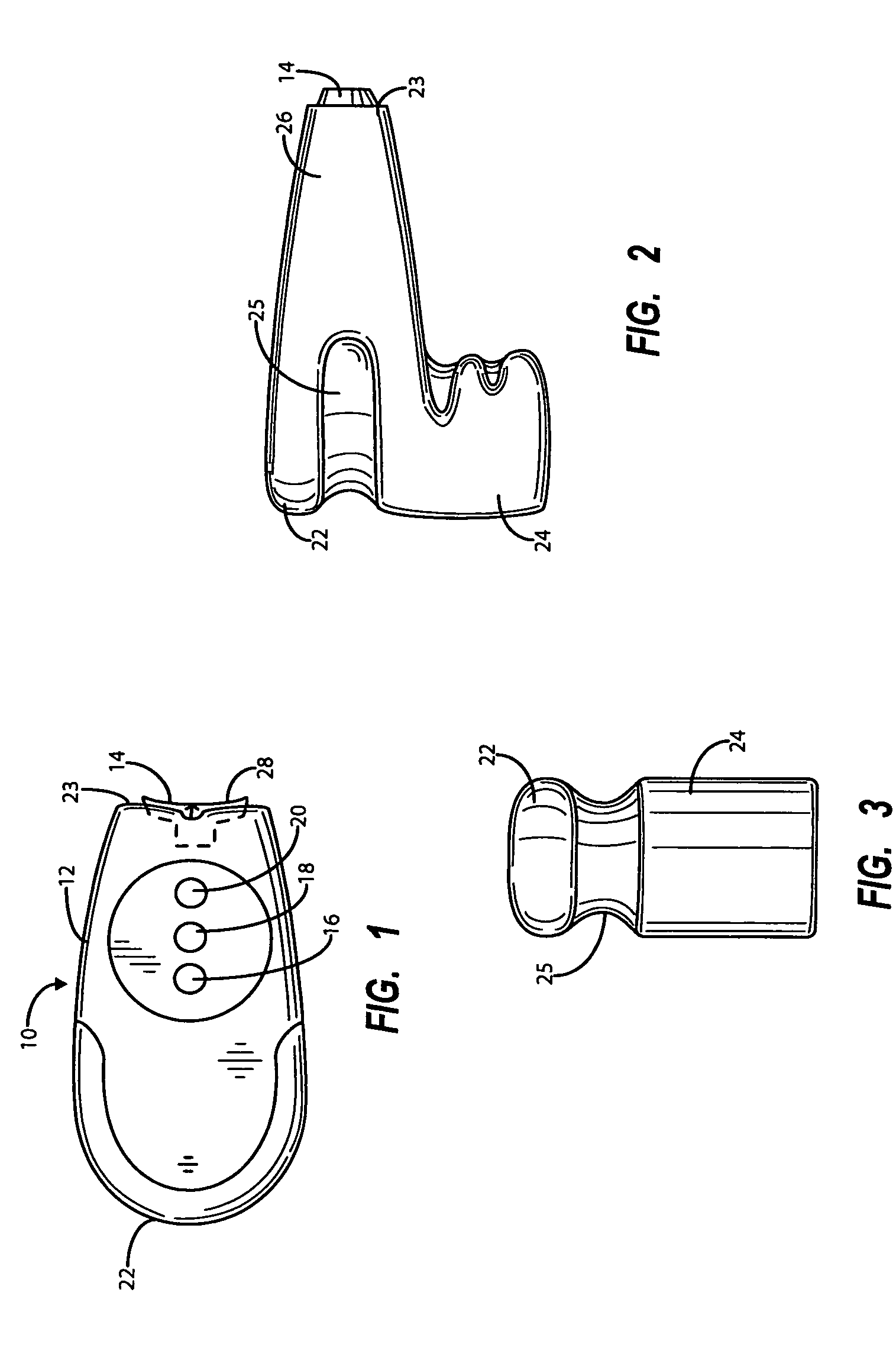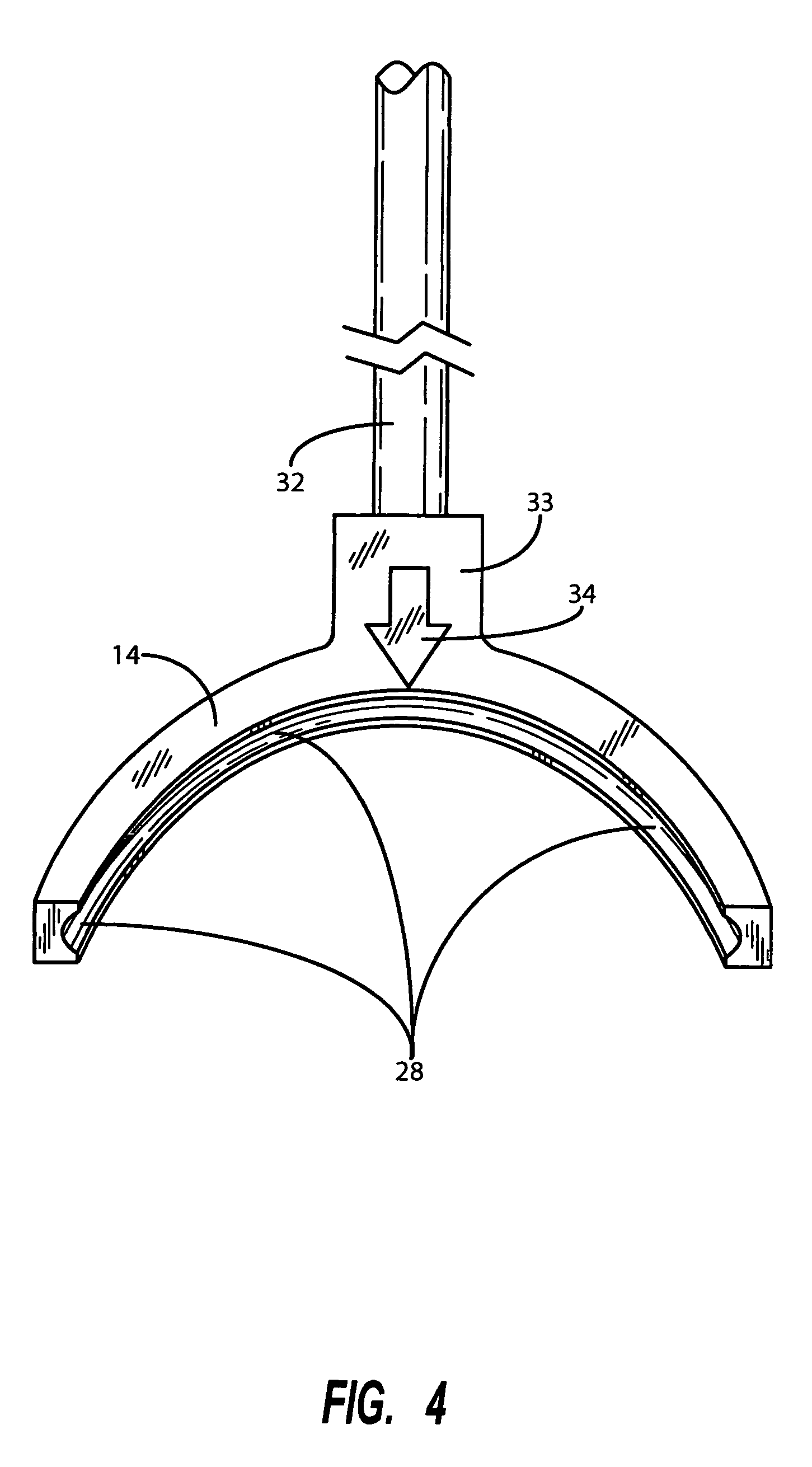Device for applying and gauging cricoid pressure
a cricoid pressure and device technology, applied in the field of medical devices, can solve the problems of little force, putting patients at risk, and requiring advanced airway management services such as bag/mask ventilation and rapid sequence intubation
- Summary
- Abstract
- Description
- Claims
- Application Information
AI Technical Summary
Benefits of technology
Problems solved by technology
Method used
Image
Examples
Embodiment Construction
[0029]Referring first to FIG. 1, the preferred embodiment of the present invention is seen to comprise a device for measuring the amount of force applied to the cricoid cartilage. The device 10 generally includes housing 12, a yoke member 14, and indicators 16, 18, and 20. The housing 12 is generally an elongated member that extends from an ergonomically rounded end 22 to a front end 23. The ergonomically rounded end 22 is shaped such that the user can grasp the device into the palm of his / her hand, by fitting the rounded end 22 comfortably against the web of skin (Thenar eminence) between the user's thumb and the index finger. The housing 12 is preferably a molded plastic, but may be formed from metal as well.
[0030]On the top surface of housing 12 are indicators 16, 18, and 20. These indicators are preferably each different colored LEDs for communicating the amount of pressure being applied on a patient's neck by the device 10.
[0031]Partially protruding from end 23 is a yoke member...
PUM
 Login to View More
Login to View More Abstract
Description
Claims
Application Information
 Login to View More
Login to View More - R&D
- Intellectual Property
- Life Sciences
- Materials
- Tech Scout
- Unparalleled Data Quality
- Higher Quality Content
- 60% Fewer Hallucinations
Browse by: Latest US Patents, China's latest patents, Technical Efficacy Thesaurus, Application Domain, Technology Topic, Popular Technical Reports.
© 2025 PatSnap. All rights reserved.Legal|Privacy policy|Modern Slavery Act Transparency Statement|Sitemap|About US| Contact US: help@patsnap.com



